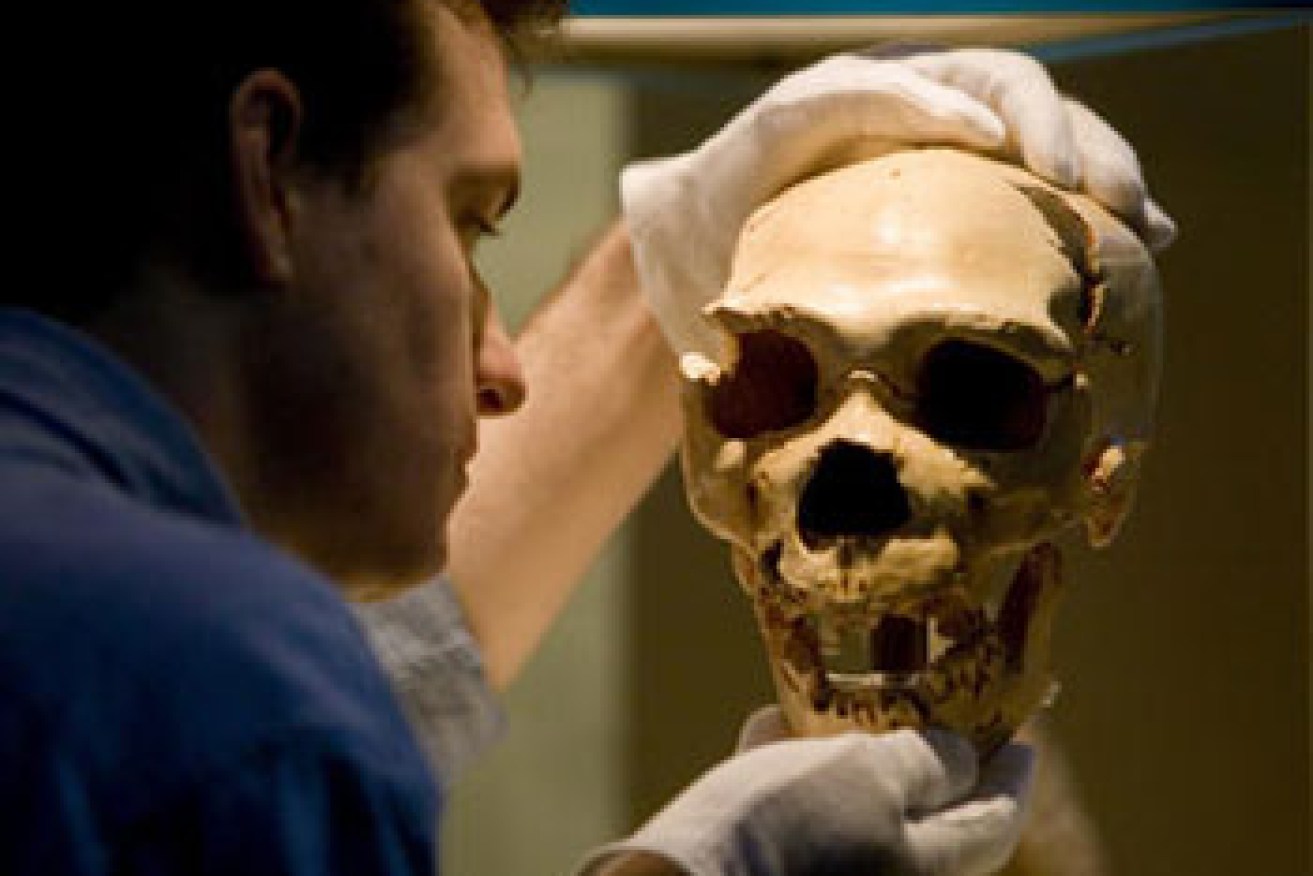This ‘controversial’ discovery could challenge human evolution


AAP
A 14,000-year-old thigh bone belonging to a mysterious human species unearthed in southwest China could challenge the understanding of human evolution.
Analysis of the remains suggests a separate group of ancient humans – not thought to belong to Neanderthals or homo sapiens – lived until as recently as the last Ice Age, which ended about 12,000 years ago.
Further assessment of fossilised skeletal remains found at Maludong, or Red Deer Cave, near the city of Mengzi in Yunnan Province, has indicated the existence of a separate group of prehistoric humans.
• Ancient ‘hobbit’ humans evolved into new species
• Oldest known stone tools found in Kenya
• Why you might have a little Neanderthal blood
Australian and Chinese archaeologists studied three sets of remains found in Maludong in 1989, with a thigh bone the most recent to be assessed. Their “compelling” findings were recently published in the journal PLOS ONE.
“Like the skull bones from the site, it is also dated to about 14,000 years old,” research team co-leader and University of New South Wales future fellow Darren Curnoe wrote in an article for The Conversation.
“But unlike them, it provides a much clearer indication of what at least some of the Red Deer Cave people bones might be.
“We need to be a bit careful though, as it is only one bone.”

Artist’s impression of the prehistoric human and photos of the thigh bones. Photo: Darren Curnoe, Ji Xueping & Peter Schouten
The ‘Red Deer Cave people’, named after the location at which they were found, were first identified in 2012 and much remained unknown about the “mysterious human group”.
It was the first time human-like fossils younger than 100,000 years old were found in mainland east Asia resembling any species other than modern humans.
However, the results from the assessment of a thigh bone found in Maludong indicated a close resemblance to very ancient human species, like early Homo erectus or Homo habilis – which lived around 1.5 million years or more ago in Africa.
The bone was small and narrow, with a long femur neck, while the place where a primary muscle attached to the hip was large and faced strongly backwards, similar to ancient humans.
When reconstructed, the body mass was thought to be about 50kg – very small, even by ancient human standards.
A spanner in the works for modern theories
The new discovery challenges the general understanding of human evolution.

Before the discovery of the Red Deer Cave people, Neanderthals were widely believed to be one of two ancient human species that were the last to die out. Photo: AAP
Until now, it was believed prehistoric humans on mainland Eurasia died out soon after modern humans arrived.
But the new research suggests they shared the region for about 60,000 years.
Dr Curnoe said the discovery was “controversial”, and although the fossils could belong to the prehistoric Denisovan species, it could not be tested as so few of their remains had been uncovered.
But there was evidence that suggested the discovery of a new species may not be so far-fetched, including the ‘Hobbit’ found at Flores, Indonesia in 2003 and other remains unearthed in Siberia that likely belonged to a species much older than that in Maludong.
“The region around Maludong … area is a biological refugium owing to its variable topography and tropical location,” Dr Curnoe said.
“The Maludong femur might therefore represent a relic, tropically adapted, archaic population that survived relatively late in this biogeographically complex, highly diverse and largely isolated region.”
‘Very likely a hybrid’
Meanwhile, a separate set of remains also unearthed in China suggested further discrepancies in the timeline of human evolution.
The fossils were found in a cave near the village of Longlin in 1979, and recent assessment found they were “very likely a hybrid” species.
“And direct dating on human bone now confirms that the specimen is only 10,500 years old,” Dr Curnoe said.
“If we’re correct, then either there were archaic humans still around at that time in Southwest China who interbred with modern humans, or their hybrid features persisted longer after interbreeding occurred because of isolation and perhaps through the action of natural selection or genetic drift.”
Despite these advances, much remains unknown about both the Longlin and Maludong discoveries.









